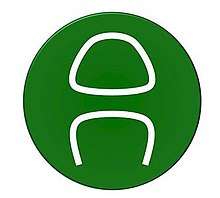OrthoCAD Network Research Cell
OrthoCAD Network Research Cell is a federally funded research and development facility in the Indian Institute of Technology Bombay (IIT Bombay), Mumbai, India.[3] The Laboratory's primary function is the design and development of reconstruction systems for orthopaedic and other applications, the current focus is on mega-implants for limb-saving surgery, mainly for children affected by bone cancer. The Cell later led to the establishment of Biomedical Engineering and Technology (incubation) Centre (BETiC).
 | |
| Established | 2007 |
|---|---|
| President | Prof. B. Ravi |
| Location | Mumbai, Maharashtra |
Operating agency | Indian Institute of Technology Bombay |
| Website | http://orthocad.iitb.ac.in/ [1][2] |
Mission
The mission of the OrthoCAD group is to develop indigenous research and development capabilities on medical implants, surgical instruments (Armamentarium), testing protocol, and surgery planning and navigation system. This is expected to respond to the growing medical needs of Indian patients, to provide affordable and available devices, and to train graduates[4] as well as research scientists in the area of Biomedical engineering and manufacturing.
Research partners
The OrthoCAD Network Research Cell was established in January 2007 in the Department of Mechanical Engineering at IIT Bombay.[3] It is supported by the Office of the Principal Scientific Advisor to the Government of India, New Delhi. In 2017, a follow-on funding was released by the Office to NFTDC for pilot production and human clinical trials.
The R&D team comprises mechanical engineers, orthopaedic surgeons and materials scientists from
- Indian Institute of Technology Bombay, Mumbai (Prof. Bhallamudi Ravi)
- Non Ferrous Technology Development Centre, Hyderabad (Dr. K. Balasubramanian)
- Tata Memorial Hospital and P.D. Hinduja Hospital, Mumbai (Dr. Manish Agarwal)
Facilities
The Centers at IIT Bombay and NFTDC together have appropriate equipment and instrumentation, including computing facilities.
- Rapid prototyping system for feasibility studies
- Knee simulator and testing machine for loosening and fatigue studies
- Computerized Universal Testing Machine for static testing of implants
- Stereo optical microscope for analyzing wear and fracture of implants
- Photoelasticity test setup for FEM (virtual testing of implants) validation
- Analytical balance (implant wear particle study)
- Surgery navigation system for linking with a 3D planning software [5]
- Medical modelling system for CT to 3D model conversion and surgery planning [6][7]
- Haptic system for mock surgery [8]
- High-end computing facilities for CAD and FEM analysis [9]
- Precision CNC manufacturing
Collaboration
The OrthoCAD group is collaborating with other similar groups in India and abroad [10] in specific area of mutual interest.[9]
References
- OrthoCAD Network Research Cell, IIT Bombay, http://orthocad.iitb.ac.in
- http://www.me.iitb.ac.in/~bravi/lab
- Development of Biomaterials, Devices and Implants for Orthopaedic applications in India, http://psa.gov.in/writereaddata/12420536351_progress_report.pdf, pp.56-59 (accessed on 10 Nov.'09)
- "Subburaj Karupppasamy | Medical Engineering and Design Laboratory | Singapore University of Technology and Design".
- Subburaj, K.; Ravi, B.; Agarwal, M.G. (2009). "Automated identification of anatomical landmarks on 3D bone models reconstructed from CT scan images". Computerized Medical Imaging and Graphics. 33 (5): 359–368. doi:10.1016/j.compmedimag.2009.03.001. PMID 19345065.
- K. Subburaj, B. Ravi, and M.G. Agarwal, "Automated 3D geometric reasoning in computer assisted joint reconstructive surgery," IEEE Conference on Automation Science and Engineering, Bangalore, India, 22-25 Aug, (2009), 367-372, PDF
- Subburaj, K; Ravi, B; Agarwal, Manish (2010). "Computer-aided methods for assessing lower limb deformities in orthopaedic surgery planning". Computerized Medical Imaging and Graphics. 34 (4): 277–288. doi:10.1016/j.compmedimag.2009.11.003. PMID 19963346.
- B. Ravi, Anip Sharma and Manish Agarwal, "Haptic Solid Modeling for Pelvic Bone Tumor Resection Planning and Prosthesis Development," International CAD Conference (CAD'05), Bangkok, 20–24 June 2005.
- B. Ravi and Manish Agarwal, "Computer-aided Development of Mega Endo-Prostheses," chapter in the book, Bio-Materials and Prototyping Applications in Medicine, (Eds.) Bopaya Bidanda and Paolo Bartolo, Springer, USA, ISBN 978-0-387-47682-7 (2007). doi:10.1007/978-0-387-47683-4_10
- Medical Engineering and Design Laboratory at SUTD http://people.sutd.edu.sg/~subburaj/